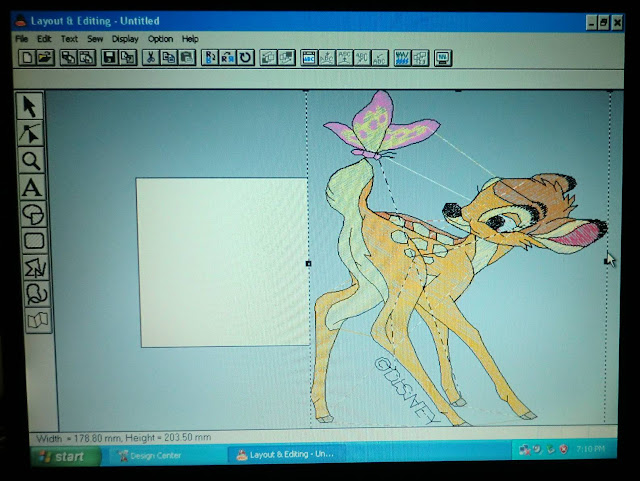
- #BROTHER PED BASIC WINDOWS 8 FOR FREE#
- #BROTHER PED BASIC WINDOWS 8 HOW TO#
- #BROTHER PED BASIC WINDOWS 8 ZIP FILE#
- #BROTHER PED BASIC WINDOWS 8 DRIVERS#
- #BROTHER PED BASIC WINDOWS 8 UPDATE#
#BROTHER PED BASIC WINDOWS 8 ZIP FILE#
Step 2: Extract the downloaded zip file (i.e., Windows 7 USB 3.0 driver file) to a specific location in your PC. Step 1: Download the driver setup file from the official manufacturer’s (for example, Intel) support website.
#BROTHER PED BASIC WINDOWS 8 HOW TO#
For instance, if you’re running on the 32-bit edition of Windows 7, you will then require to find and download the USB 3.0 driver for Windows 7 32-bit version.īelow are the step-by-step instructions on how to install the latest Intel USB 3.0 driver for Windows 7 64-bit or 32-bit, 8, 8.1, and 10.
#BROTHER PED BASIC WINDOWS 8 DRIVERS#
Note: To download USB 3.0 driver manually, you can either go to the original PC vendor websites such as HP, Lenovo, Dell, Asus, etc., or to the official device manufacturers such as AMD and Intel.īefore downloading drivers manually, make sure that the driver version is compatible with the version of Microsoft Windows and processor type.

You can manually download and install the USB 3.0 driver for Windows 10, 8, and 7 computers via visiting the official manufacturer’s support website.
#BROTHER PED BASIC WINDOWS 8 UPDATE#
Method 2: Download and Update USB 3.0 Driver Manually USB 3.0 has a maximum data transmission speed of 5 Gbit/s (SuperSpeed), about 10 times faster than the USB 2.0 (480 Mbit/s) standard. Performing the aforementioned steps not only takes care of all USB 3.0 driver-related problems but also optimizes your computer to run at peak performance.

Step 3: Click on the Update Now button next to the flagged device driver, i.e., Windows 10 USB 3.0 driver. Step 2: Click on the Scan button to detect outdated and missing drivers.
#BROTHER PED BASIC WINDOWS 8 FOR FREE#
Step 1: Download and install Bit Driver Updater for free using the given link below. With Bit Driver Updater installed on your PC, you can automatically download Windows 10 USB 3.0 driver without the need of going through any complicated steps.īelow are a few simple steps to help you download the USB 3.0 driver automatically. The best way to download and install the latest USB 3.0 driver for Windows 10, 8, and 7 computers is by using an industry-acclaimed tool such as Bit Driver Updater. Method 1: Download and Update USB 3.0 Driver Automatically (Experts-Recommended) You can try the below-listed methods to download and update USB drivers on Windows 10, 8, 7 in the most hassle-free manner. Unlocks new features and configuration options in your devices, especially with video cards and gaming devices.Frequently Asked Questions (FAQs) about USB 3.0 Drivers for Microsoft Windows Easy Methods to Download and update USB 3.0 Driver for Windows 10, 8, and 7

If your deskttop or laptop is running slow, or keeps crashing or hanging, there is a good chance that updating your drivers will fix the problem.Įnsures your hardware runs at peak performance.įixes bugs so your system will have fewer crashes. Many computer problems are caused by missing or outdated device drivers, especially in Windows 10. Next, update individual drivers or all of the necessary drivers with one click. When the scan is complete, the driver update utility will display a results page showing which drivers are missing or out-of-date: Once you download and run the utility, it will scan for out-of-date or missing drivers: It will Update all of your drivers in just a few clicks, and even backup your drivers before making any changes. The Driver Update Utility automatically finds, downloads and installs the right driver for your hardware and operating system. Automatic updates could save you hours of time. If you are having trouble finding the right driver, stop searching and fix driver problems faster with the Automatic Driver Update Utility. Visit our Driver Support Page for helpful step-by-step videos Install Drivers Automatically In most cases, you will need to reboot your computer in order for the driver update to take effect. Locate the device and model that is having the issue and double-click on it to open the Properties dialog box.Ĭlick the Update Driver button and follow the instructions. In Windows XP, click Start -> Control Panel -> Performance and Maintenance -> System -> Hardware tab -> Device Manager button In Windows Vista, click Start -> Control Panel -> System and Maintenance -> Device Manager In Windows 7, click Start -> Control Panel -> Hardware and Sound -> Device Manager

In Windows 8, swipe up from the bottom, or right-click anywhere on the desktop and choose "All Apps" -> swipe or scroll right and choose "Control Panel" (under Windows System section) -> Hardware and Sound -> Device Manager In Windows 10 & Windows 8.1, right-click the Start menu and select Device Manager It allows you to see all of the devices recognized by your system, and the drivers associated with them. To install a driver in Windows, you will need to use a built-in utility called Device Manager. Once you download your new driver, then you need to install it.


 0 kommentar(er)
0 kommentar(er)
